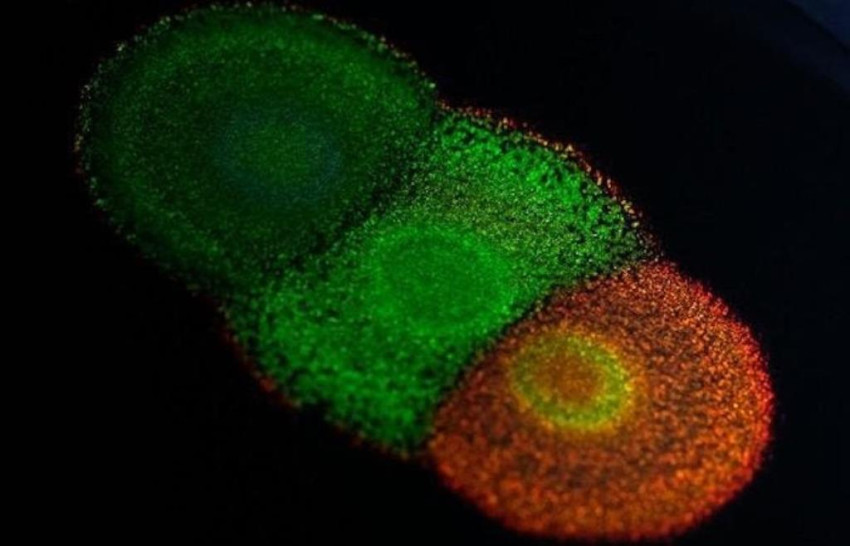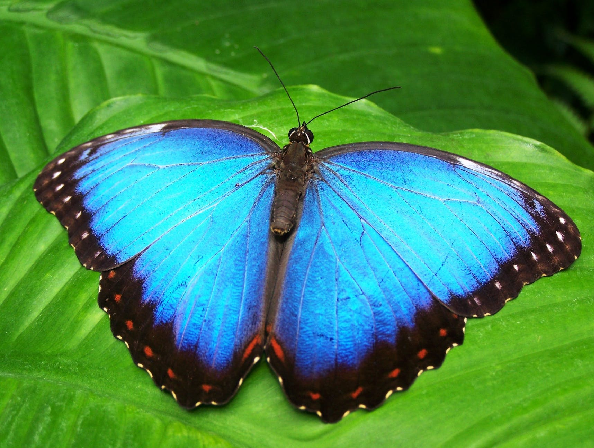
Nanostructure gives bacteria their colour
Researchers have unravelled the mechanism that causes bacterial colonies to change colour. By genetically modifying the micro-organisms slightly, they move to a different nanostructure, giving them a different colour. In future, bacteria may be used as biodegradable paint.
Nature gives us the most spectacular colour displays, for example in butterflies. They have millions of small scales on their wings, arranged in a specific way. Due to the repetitive structure of the scales, they only reflect light of a certain wavelength, making the wings metallic blue, for instance. Then by changing the distance between the scales, light of a different wavelength is reflected, which is why butterflies have such a wide range of colours.
Colony

Credits: Colin Ingham, Hoekmine BV
Flavobacteria get their colour from the same principle. Together they form a large group: a colony. This means that the bacteria abut each other, giving the colony a metallic colour, just like a butterfly wing. Scientists from the University of Cambridge and Dutch biotechnology enterprise Hoekmine BV have discovered which genes are responsible for the colour of a colony.
Different position
By modifying certain genes, the shape or free motion of the bacteria changes. This means they end up abutting each other in a different way in the colony, generating a different colour. Researchers were able to use this property to change the colour of the colonies, to red and blue for instance, though the natural appearance is green. They were also able to turn colours matt, or even make them disappear altogether.
Coloured walls
'We could use these bacterial colonies as adjustable, living photonic structures that can even replicate themselves. And that means that we may be able to circumvent the conventional nano-production methods,' says chemist Silvia Vignolini from the University of Cambridge, who is part of the research team, in a press release. 'We want to use this as a photonic pigment that can be fully programmed to change from one colour to another with an external stimulus. In future we imagine biodegradable paints, and coloured walls that take on exactly the colour we want them to.'
Biomimicry

its Structural Blue colour.
Source: pixabay.com
'It's strange that these genes haven't been studied before,’ says Colin Ingham, CEO of Hoekmine BV. 'As they represent a perfect example to us of how colours can be created.' To illustrate this, Ingham mentions the car manufacturer Lexus. 'To make cars in the Structural Blue colour, Lexus uses techniques based on the wings of a blue butterfly.' So you can mimic natural colours by imitating the nanostructure using a different material.
Biosensor
According to Ingham, flavobacterium might also be useful as a biosensor. The idea is that scientists add molecules to the bacteria that are sensitive to poisonous substances. When they detect poison, the colony changes colour. So, this works as an alarm that alerts you to the presence of poison.
In further follow-up research, Ingham also wants to find the genes in other organisms that cause structural colours. He also hopes in future to make new colours using CRISPR-Cas, a precise method for processing genes.
If you found this article interesting, subscribe for free to our weekly newsletter!
Opening photo: colonies of flavobacterium. Their colour depends on the position of the bacteria and the angle at which they are illuminated. Source: University of Cambridge.







